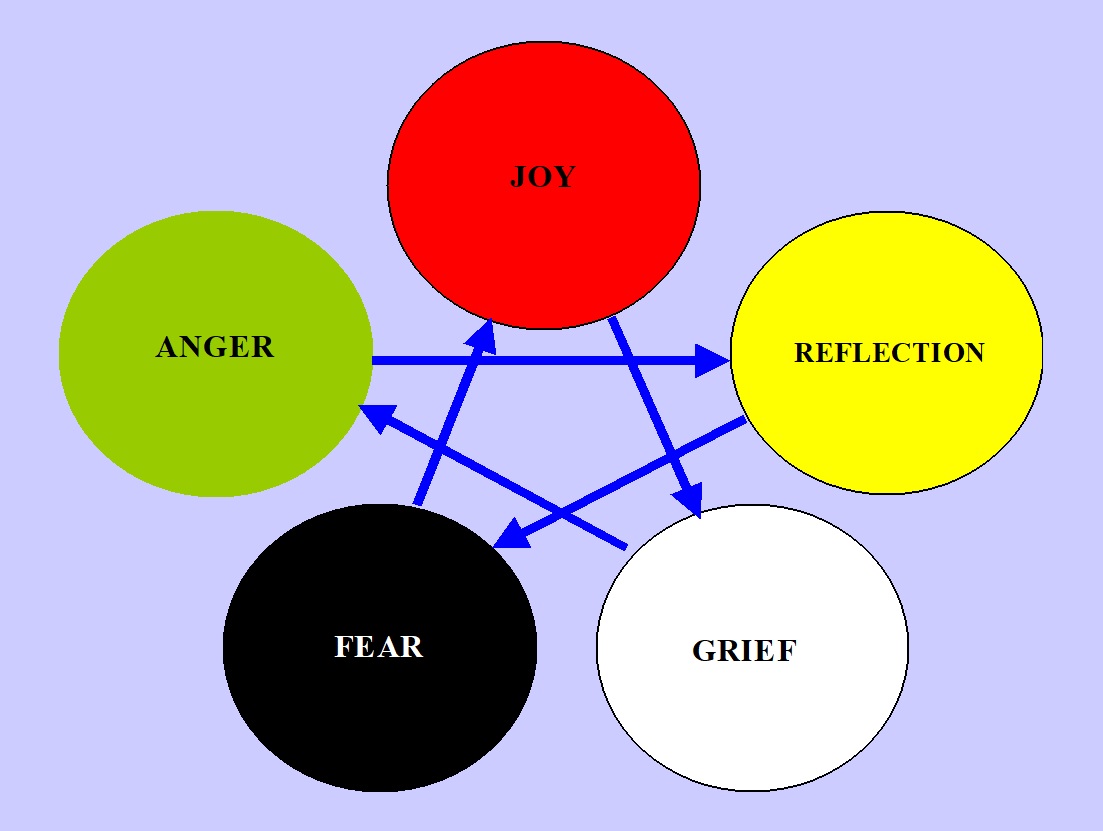by Dr John McDonald, PhD
Anxiety can be very uncomfortable, even excruciating and paralysing, but Traditional Chinese Medicine has developed some strategies which might help.
The Yellow Emperor’s Classic of Internal Medicine was a Chinese medical classic written more than two thousand years ago. This classic introduced the theory of Five Elements – Wood, Fire, Earth, Metal and Water. The Five Elements harmonise with each other through the Generating cycle (Sheng cycle) and the Constraining cycle (Ke cycle).
Wood generates Fire, Fire generates Earth, Earth generates Metal, Metal generates Water, Water generates Wood.
Wood constrains Earth, Earth constrains Water, Water constrains Fire, Fire constrains Metal, Metal constrains Wood.
The Yellow Emperor’s Classic also associated a particular emotion with each element – Anger with Wood, Joy with Fire, Reflection with Earth, Grief with Metal and Fear with Water. The Generating and Constraining relationships could also be applied to the emotions.
Anger generates Joy, Joy generates Reflection, Reflection generates Grief, Grief generates Fear, Fear generates Anger.

Anger constrains Reflection, Reflection constrains Fear, Fear constrains Joy, Joy constrains Grief, Grief constrains Anger.

The Five Element relationships between the emotions was used as the basis for a therapy by 12th Century Chinese doctor, Zhang Congzheng. By creating specific emotions, he reasoned that this could generate or constrain other emotions. Among his case histories he recounts stories of making an emperor laugh with a comedy performance to break through excessive grief, and provoking anger to break through excessive reflection. According to Zhang, the Constraining emotion should be used to produce a short-term effect but for long term resolution, the Generating emotion should be the focus.
So how can this be applied to dealing with anxiety? There are several strategies suggested by this model.
Reflection constrains fear
Fear is not just a feeling. It is whole body experience. When we experience fear, a physiological alarm goes off. Our breathing changes, our heart beats faster and a surge of adrenalin prepares us for fight or flight. But are we reacting to a real danger, or is it just a perception of danger? Let’s take a scenario of running late for work on a train. We become anxious and our breathing and heart rate change. So how big a danger are we really facing here? Let us reflect for a moment. Are we about to die? No. Suffer serious injury? No. Will our boss physically attack us when we arrive late to work? Probably not. Will our boss be verbally abusive and humiliate us in front of the other staff? Probably not. Will we be fired on the spot? Very unlikely. We arrive at work to find that the boss has not yet arrived. His train was delayed too. Then we wonder why we agonised through that entire train journey over a threat which was not real. Reflection can be useful to assess just how much danger we are really in at any given moment.
Joy constrains grief, which generates fear
Laughter helps to move us out of grief, even if only temporarily. These days comedy is not hard to find and by choosing to watch comedy rather than horror or drama, we can constrain grief, which in turn will then not generate fear. A good sense of humour and a hearty laugh can help to move us out of anxiety.
Grief generates fear
When fear is a longstanding issue for us, Zhang recommended that we focus on dealing with our sense of loss. Fear is generated by what we fear to lose. When we have nothing to lose we have nothing to fear. This is a process which could take a long time, but there is no rush.
Create tranquility – breathe
The opposite of fear is tranquillity. When we are tranquil and serene, anxiety simply does not arise. The opposite of “fight or flight” is “rest and digest”. When the sympathetic nervous system is triggered this creates the adrenal rush of “fight or flight”. The parasympathetic nervous system, when activated, inhibits the sympathetic nervous system and switches off the alarm – the emergency is past; everything is fine. This is called the “rest and digest” state. So how do we switch off the alarm? The key is to deliberately change our breathing. When our breath is rapid and shallow, our body will believe we are in danger, even if the emergency is running late for work, as opposed to being in fear of our lives. Our sympathetic nervous system cannot tell the difference between real danger and anxiety. The way to switch off the alarm is to breathe like we are perfectly safe – slowly and deeply. This could be meditation, yoga or Tai Ji Quan but it does not need to be. We can also achieve the same result by singing or physical activity (dancing, walking, swimming, exercise) as they all change our breathing. Physical activity also helps by burning off the arenalin that our body helpfully provided us with to help us outrun whatever was chasing us.
REFLECT LAUGH BREATHE

Thank you.very inspiring
LikeLiked by 1 person
Pingback: Dealing with anxiety: Some tips from Traditional Chinese Medicine - You Can Quit Now